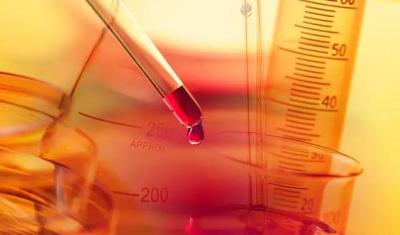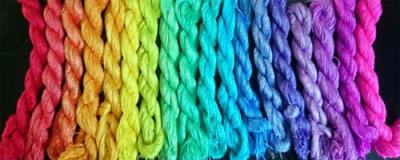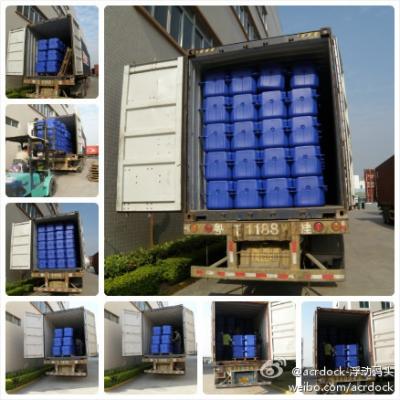
Advanced dyeing and finishing technology: Detailed common quality problems and selection of textile auxiliary
Here we mainly discuss on the influence of textile auxiliary: The quality of pretreatment (scouring and bleaching) is related to not only effect on the quality of the end product, but also, as a semi-product, has effect on the quality of the dyeing, printing and finishing. Some experts think that 70% of the unqualified products is caused by improper pretreatment. And in a sense, it may be true. Though the result of dyeing and finishing is still related with the quality of the fabric, the equipment, the operation, the processing technology, the dye and the auxiliary. Now, we focus on the the auxiliary.
There are many different kinds of problems related to textile auxiliaries, here in this article, we mainly talk about three common quality problems of pretreatment and the choose of the auxiliary.

1. The unsatisfying whiteness and capillary effect
The unqualified whiteness problem include chromatism and uneven dyeing. The unqualified capillary effect problem is that it can not reach 8cm in 30mins. Through the unsatisfied effect is also related with the quality of the fabric. For example, if the percentage of low-level cotton is too high, the whiteness and capillary effect is not easy to reach. The main problem is the process and the selection of auxiliary. In the process:
(1) keep enough H2O2 and NaOHIn the pretreatment, H2O2 take effects not only as a bleach, but also impurity remover (including removal of cottonseed hull). If the quantity of H2O2 is not enough(including the quick decomposition of H202), the whiteness will not be reached. NaOH is not only supply the Ph value which is necessary in the process of H2o2 bleaching, but also remove the impurities by combining with the scouring agent. If the NaOH is not enough, the impurity will be higher and the capillary effect can not be reached. So the enough H2O2 and NaOH is the first factor of the whiteness and the capillary effect.
(2) Choose good scouring agent
The cleaning, emulsification, dispersion, penetration and other comprehensive effects of scouring agent must be excellent in order to ensure the removal of impurities, and to ensure the whiteness and capillary-effect. But the quality of the scouring agent in the market is varied , and we must select excellent product in comprehensive effects, but not just penetration and solid content, which is only one aspect need to be considered.
(3) Oxygen bleaching stabilizer and chelating dispersant
This two kinds of auxiliaries is used to combine the metal ion like Fe3+ in the water , which will catalyze the quick decomposition of H202. If the H2O2 is decomposed, the whiteness and the capillary effect will fail to reach, and the damage of the fabric is possible to appear. So we need to choose excellent oxygen bleaching stabilizer to meet the requirement. And the decomposition rate of the H2O2 is the most important index consider in the selection. The chelating dispersant is not only used to combine the steel icon, but also disperse the impurities and keep them away from the fabric and lower the whiteness. So when we choose the chelating dispersant , the steel icon combine ability and the disperse ability of the impurities is both important.
The action between textile auxiliaries and the impurities will occurs only under certain temperature and time. If this conditions is not occur, the whiteness and the capillary effect will fail to reach.
The washing is an important step after scouring and bleaching. This step is used to clean the impurities and keep the whiteness and the capillary effect.
2. The incomplete removal of the cottonseed hull.
In some circumstance, the NaOH will make cottonseed hull expand. And then, the mechanical force will help to remove it. The appearance of incomplete removal mainly caused by the low temperature and insufficient time. So to keep complete removal of the cottonseed hull, the high enough temperature and the sufficient time is necessary. H2O2 and scouring agent is helped in some circumstance. So we need to provide enough time and temperature to help the complete removal of cottonseed hull. And NaHSO3 or Anthraquinones material can be added in the same time to remove the cottonseed hull.
3. The hole or damage of the fabric
Besides the singeging hole, hook hole, and the original hole on the fabric, the main possibility that causes the hole on the fabric is metal ion like Fe3+、Cu2+ in the H2O2 bleach bath or on the surface of the fabric. The metal ion catalyze the H2O2 to decompose quickly and damage the fabric. If the metal ion concentrate, there will be a hole on the fabric. So the good oxygen bleaching stabilizer and chelating dispersant should be selected to combine the metal icon in the bleach bath or on the surface of the fabric and prevent the appearance of the hole or damage caused by the quick decomposition of H2O2.
Moreover, the acidic or alkalic environment on the fabric make also cause damage on the fabric. and the alkalic environment under high temperature may also cause the damage of the fabric. And we can add weak reductant like NaHSO3, to prevent.
The mildew of the fabric is another reason that cause the hole or damage of the fabric.



 English
English  日本語
日本語  Español
Español  tiếng việt
tiếng việt  Türkçe
Türkçe  ไทย
ไทย  українська
українська  हिंदी
हिंदी  বাঙালি
বাঙালি  اردو
اردو 




![The Moisture And Soft New Height Of Chemical Fiber Fabric [RL-CK Oil]](/uploads/image/20170504/14/softening-agent-hr-100_400x400.jpg)